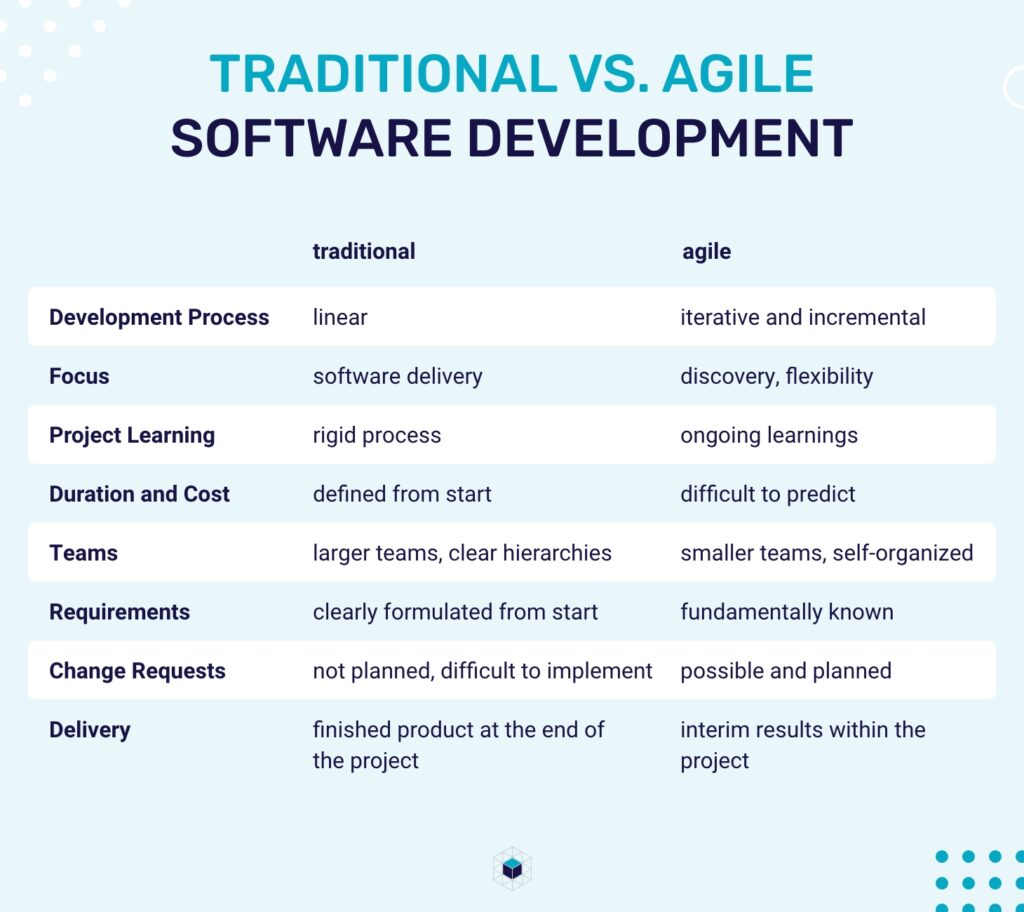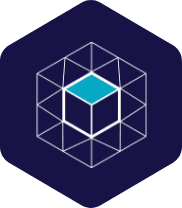
An Overview of Traditional and Agile Software Development
Author: Carina Czisch
· 2 mins readWhich approach makes sense for successful software development for your project? Both ways – traditional ones like waterfall and agile ones such as Scrum – have their advantages. However, the decision depends on many factors. So you should be aware of the problems and requirements of the software in advance.
What is Traditional Software Development?
In traditional software development the individual development phases proceed linearly and are completed by milestones. The whole process can be described as rigid. Project-relevant factors such as costs and duration are determined and clearly defined before the project starts. This means that adjustments and change requests during the process are very difficult to implement or not possible. The focus here is the delivery of a finished product at the end of the project.
What is Agile Software Development?
Agile software development has an iterative and incremental approach. Certain cycles are repeated multiple times and deliver a functional interim product. There is no ready-made schedule here but rather short planning cycles. That means that it is possible for you to react to short-term adjustments. The software is developed step by step. Discovery and change is the focus here. So you will have functional interim results within the project.
Need Expert IT Solutions?
Get a Free Consultation Today!
Whether you’re dealing with network issues, cybersecurity concerns, or software integration, our team of IT experts is here to help. Don’t let tech troubles slow you down. Call us now for a complimentary initial assessment, or click below to fill out our quick contact form. Let’s make technology work for you.
Differences Between Traditional and Agile Software Development
We have compared the most important criteria of both approaches in a graphic. This includes for example the development process, the requirements, or the delivery of the software. But there are also differences in the composition of the teams: With traditional development approaches you often work with larger teams and clear hierarchies. Tasks are mostly assigned from above. In agile development the teams are usually smaller. They work in a self-organized way and with a high degree of personal responsibility.

The Right Composition of the Team
Personal strengths and weaknesses are very important and should be taken into consideration when you plan a new project. Someone who has only worked traditionally so far may have difficulties finding their way in the agile work environment. Also when it comes to more initiative. Of course, the same applies the other way around. In both approaches, important soft skills and good teamwork will impact the success of your project.
Final Thoughts
There is no right or wrong on a specific software development approach. Rather it is a weighing of certain criteria. The requirements and resources of your project are known and defined? Fine. Then a traditional management method can be very promising.
If on the other hand the requirements are still very unclear and changes in the process are necessary and planned the advantages of agile methods outweigh the disadvantages. A hybrid solution consisting of both models is also recommended for some projects.





Share